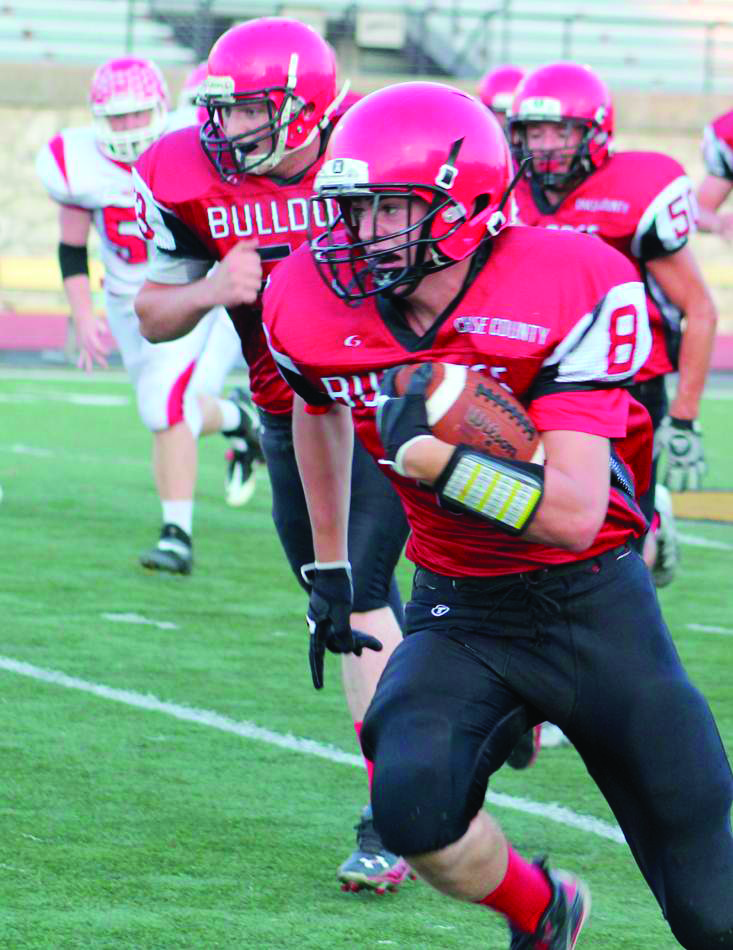Sublimation the Future of Apparel
Durable jerseys provide schools an opportunity to save money
Apparel can be a source of frustration for a lot of athletic directors. Jerseys wear and tear, costing thousands of dollars to sports programs already limited by tight budgets.
Apparel companies believe they’ve found the solution, and more athletic programs are turning to a process called sublimation in order to get the most for their money. Sublimation is a dying process that inks logos, numbers and other images directly into the fabric, increasing durability and longevity for team jerseys. Screen-printed jerseys tend to peel or wear, showing their age after just a few years, which is why many schools are searching for a better alternative.
That’s not a problem in sublimation, and with athletic directors forced to do more with less money, apparel distributors say it’s become the hottest trend in the industry. Just 21 percent of athletic administrators saw an increase in their athletic budgets from 2012-13, according to Coach and Athletic Director’s annual survey, so smarter spending strategies are crucial to avoid cutting sports or jobs. “You have customers that want more because they’re seeing it out there and at the same time budgets still haven’t come back to what they were before the recession,” said Dustin Dreiling, sales manager at GTM Sportswear. “You’ve got to have a product that shows them what they want and is innovative.”
“You have customers that want more because they’re seeing it out there and at the same time budgets still haven’t come back to what they were before the recession,” said Dustin Dreiling, sales manager at GTM Sportswear. “You’ve got to have a product that shows them what they want and is innovative.”
Many athletic directors purchase jerseys in four-year cycles. Screen-printed fabrics can be in rough shape by the end of that period, depending on the level of care taken by players and coaches. That’s where sublimation finds its niche, offering a sleeker alternative that offers a variety of benefits.
Branding has become priority with athletic programs, especially those looking to find extra revenue streams for their departments. But when the volleyball, baseball and football teams all wear their own uniquely designed apparel, it’s difficult to carry a consistent logo that’s instantly recognizable to those inside and outside of the school.
Sublimation can be used on bags, blankets and a number of other items that have become popular sellers for booster clubs. Streamlining the logo and using it on a variety of merchandise can only help the sports programs in the long run.
“At the high school level, that athletic director has to understand that there are so many marketing opportunities from sublimation that allow you to make money,” said Ray Kowalski of Prime Time Sports Apparel. “Honestly, athletic directors are so used to paying big money to big manufacturers, there’s a little bit a shock when they hear everything they can get for the price.”
Both GTM and Prime Time Sports see sublimation as the wave of the future, and for many athletic programs the future is now. GTM offers sublimated apparel through its UltraFuse line, and schools can order apparel in any combination of team colors. That’s something that was difficult in the past, especially for teams that had non-traditional colors.
For athletic directors in need of a quick turnaround, some companies are capable of getting schools their apparel well before the season starts. GTM, for example, has a factory near its Kansas headquarters, and Dreiling said most schools are able to get their orders in six weeks or less.
Kowalski said the same thing of Prime Time Sports. The company owns production facilities both overseas and in the U.S., allowing the process to run smoothly without much delay.
For sports departments what it all comes down to it customization and the luxury athletic administrators have in getting exactly the look that they want. It’s also about value, and apparel companies believe that’s exactly what teams are getting with sublimation.
“Right now athletic directors want to know when they open that checkbook that they’re getting their money’s worth,” Dreiling said. “They want to know, especially for uniforms, that it’s going to hold up. That’s a huge concern right now, especially for athletic directors.”





